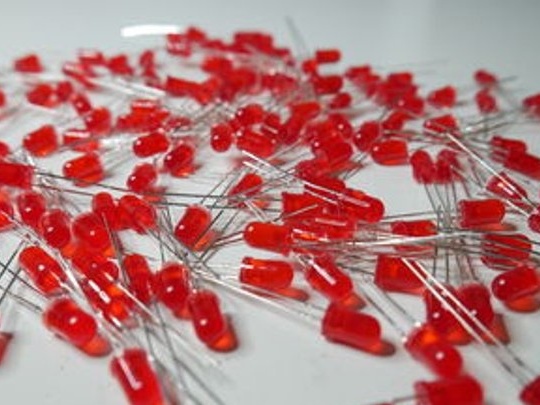
A LED is a type of diode, so when connected, it requires not only current limitation, but also polarity. But in explicit form, it is not indicated anywhere on the body of the part, and it will have to be determined by indirect signs. The author of Instructables under the nickname Nikus knows as many as five of these signs. Now you will recognize them.
Like the electrodes of a conventional diode, the electrodes of the LED are called the anode and cathode. The first of them corresponds to the plus, the second to the minus. With direct polarity, the LED acts as a stabilizer: it opens with a small voltage, depending on the color (the shorter the wavelength, the longer it is). Only in contrast to the stabistor, does it glow at the same time. With reverse polarity, it behaves like a zener diode, opening at a much higher voltage. But this mode for the LED is abnormal: the manufacturer does not guarantee that the product will not fail, even if the current is limited, and you will not get any light.
If the LED is not soldered out by you from anywhere, but is bought new, one output is longer than the other. Do you think this is the result of not very accurate manufacturing? Nikus has a different opinion. That conclusion, which is longer, corresponds to the plus, i.e., the anode. That’s the whole secret!

But friends do not very often use new LEDs. Well, there is such a sign that when soldering, shortening the conclusions and subsequent soldering, the details do not disappear. Uninitiated and he seems like a small manufacturing defect. No, it’s also for good reason: a small flat area on a cylindrical body, as if by chance a file was accidentally drained. It turns out not by chance. This label is located next to the negative terminal - the cathode.
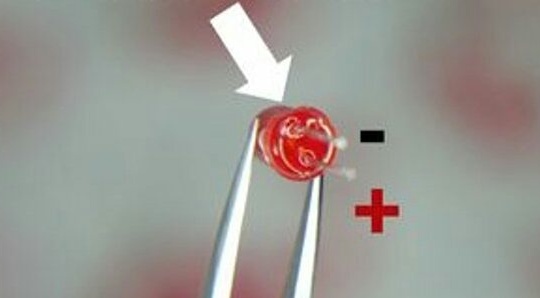
Nikus also advises to look inside the LED. To break? Not at all. Matte LEDs have almost disappeared from the market, remained transparent, allowing you to see the internal structure from the side. Two flat plates are connected to the terminals, and they are also of different sizes. A large one holds a cup with a crystal, and a small one holds a hair connected to the crystal from above. Calyx - minus, hair - plus.
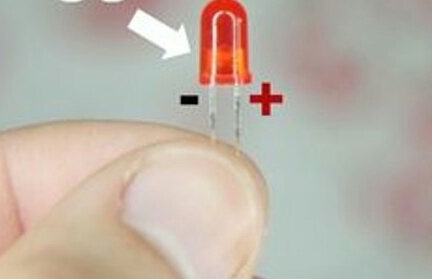
A rare master does without assistant devices, so Nikus bought himself an inexpensive multimeter.
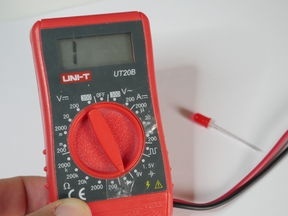
Among other modes, it has a diode test mode.

When a conventional diode is connected in the correct polarity, the device shows a direct voltage drop in this mode. For the LED, this drop is always more than one volt, so even with the right connection, the display will not change. But the LED will light up slightly. If the probes are connected to the multimeter correctly, that is, black - to the COM jack, and red - to the VΩmA jack, the red probe will correspond to a plus.

With arrow testers more difficult. Those that are powered by one 1.5-volt battery are not suitable for checking LEDs. Those with a supply voltage of 3 to 12 V are suitable, but in the ohmmeter mode, the voltage polarity on the probes is often the opposite. You can check it with another device operating in the mode of a voltmeter. Only on that and on the other, connect the probes correctly!
Nikus writes that he carries a multimeter with him everywhere except the pool. You, most likely, do not do this, and the need to know the polarity of the LED can occur suddenly. A common three-volt battery of sizes 2016, 2025 or 2032 will come to the rescue. With a new battery, the voltage without load can reach 3.7 V, so it’s better to take a slightly discharged battery, for about 2.8 V, it’s better for the LED.
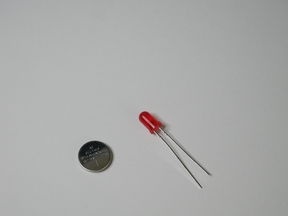
The positive pole corresponds to the contact area on which the entire marking is applied: manufacturer, type, parameters. Often there is also a plus sign. Remember that such batteries are afraid of short circuits.
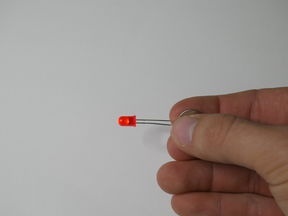
Remember these signs, and you can always accurately determine the polarity of the LED the first time.
